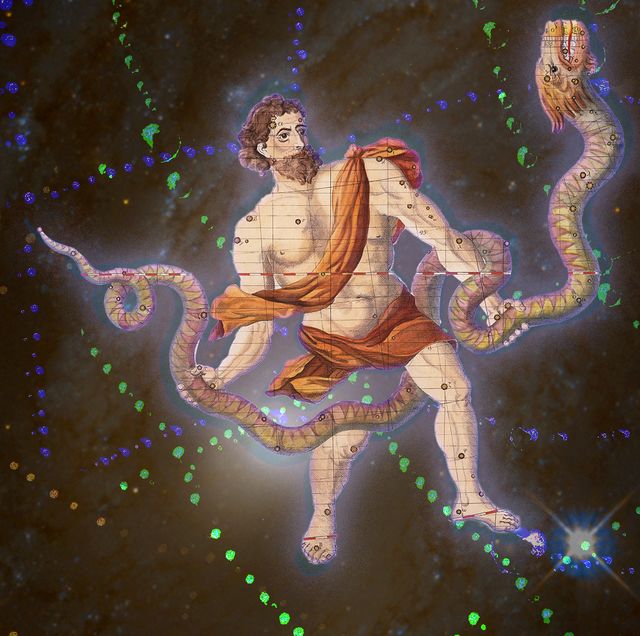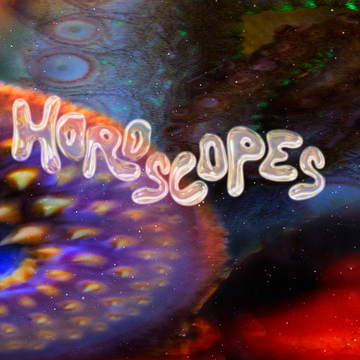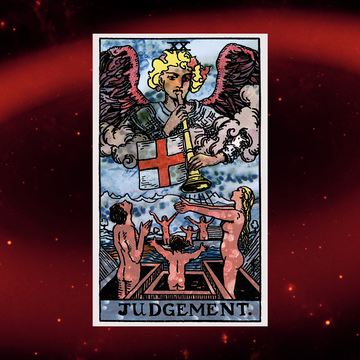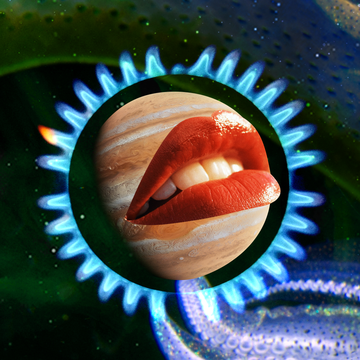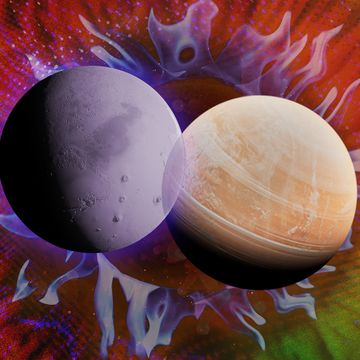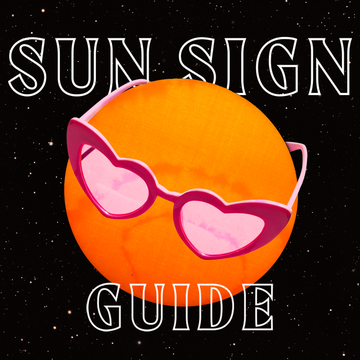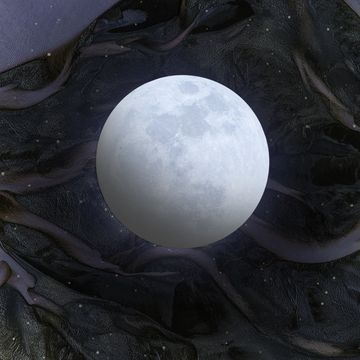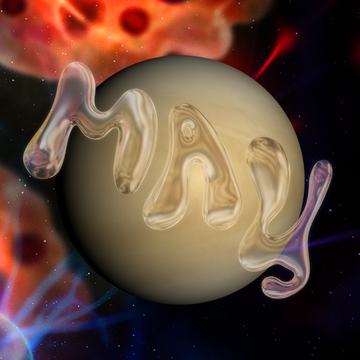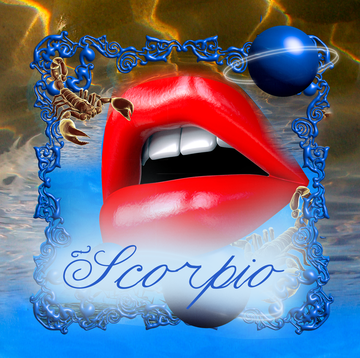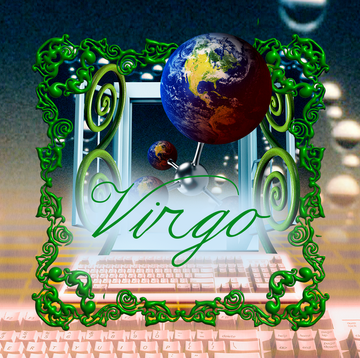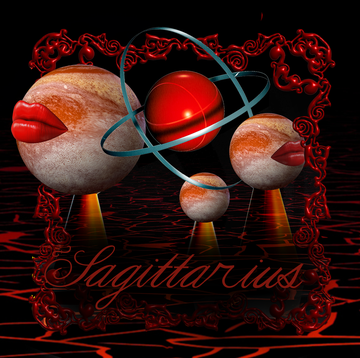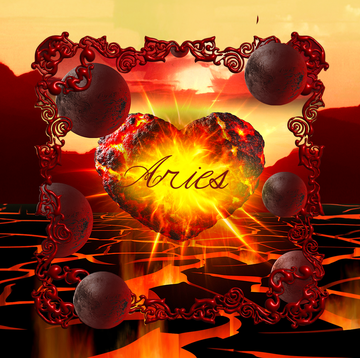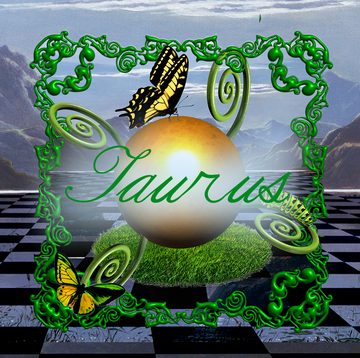Every six months or so, the internet promptly panics when yet another story about “Ophiuchus, the 13th zodiac sign” goes viral. Apparently, the viral story goes, NASA has just discovered a 13th zodiac sign, and the other 12 zodiac signs have had to shift their dates to make room, changing everyone on Earth’s zodiac sign in the process. Sounds chaotic, right?
Sorry, but, um, this isn’t a thing. We’re here to tell you to calm down—you’re still a Cancer or a Pisces or an Aries or whatever. This viral story has been popping up here and there since at least the 1970s—yep, pre-internet!—and every time, it’s been debunked. There's even a whole Snopes.com page (from 2015!) debunking the myth. But even now, stories about “Ophiuchus” still keep resurfacing. So let’s talk about it, so next time your friend texts you frantic that they are now a Gemini instead of a Cancer, you can reassure them.
Where did the Ophiuchus story come from?
According to Snopes, these stories have been circulating online since at least as far back as 2002 via various chain letters and viral blog posts. For example, a flurry of headlines were published in early 2016 after NASA published a (since-deleted) blog post on its children’s site, Space Place, showing where Ophiuchus would fall in the zodiac if astrologers decided to include it, while acknowledging that, well, they didn’t. More recently, USA Today traced 2020 headlines about the “13th zodiac sign” back to a viral Facebook post from a Virginia-based radio station.
But this story long pre-dates the internet. Back in 1970 (yep, over 50 years ago), Time magazine published a story on the purported "revised zodiac." This "revised zodiac" was attributed to a man called Steven Schmidt who had just published a book called Astrology 14, in which he argued that there should be 14 zodiac signs, not 12. Along with Ophiuchus, falling between Scorpio and Sagittarius, he introduced another sign called Cetus, falling between Aries and Taurus. Schmidt's "revised zodiac" was based partially on the constellations along the ecliptic, and partially on the fact that he felt like the Sun signs didn't accurately describe his or his son's personalities.
However, it's important to note that even at the time, there weren't any astrologers who agreed with Schmidt. The Time piece even acknowledges, "Astrology 14 is not exactly moving either heaven or earth within the trade." BTW, if you want to read Schmidt's full argument, you can. With a little bit of searching, you can find used copies of Astrology 14 available online on sites like Amazon, Etsy, and eBay.
The grain of truth in the Ophiuchus hoax
Although Ophiuchus is not part of the zodiac, there is a teeny-tiny bit of truth in these viral stories: Ophiuchus is a constellation (although not a “new” one), and the appearance of the constellations in the sky has changed over time. But this is undeniably astronomy, not astrology, and it doesn’t affect your zodiac sign.
First, the Ophiuchus constellation isn’t new. In fact, we’ve known about it for thousands of years—according to The Guardian, the first recorded mention of Ophiuchus came in 300 BC. It’s always been a part of the Sun’s path in the sky (called the ecliptic), but it’s largely been left out of astrology.
The origins of the zodiac go back approximately 2,500 years when the Babylonians separated the sky into 12 different sections. They studied an apparent relationship between the constellations’ placements in the sky and the movement of the Sun, and thus, the 12 signs were born. They saw the constellation of Ophiuchus, too, but since it didn’t fit neatly into one of these 12 slices, they decided to leave it out of the zodiac—along with dozens of other constellations. So, no, scientists didn’t “just discover it.”
However, the Earth’s wobbly axis means none of the constellations are in the same place they were all 2,500 years ago, from our POV on Earth looking up at the sky. That, along with the sheer existence of this not-new constellation, means some people argue that the astrological signs we’ve all come to know and love have altered. (These people are not astrologers.)
Even though Ophiuchus is undoubtedly an observed constellation (located northwest of the center of the Milky Way, in case you were curious), could it have the chance to be an actual member of the zodiac? Well, astronomers won’t comment on that part, considering astrology is not science, and astrologers aren’t buying that our signs have shifted.
Below is all the info you need to know about the Ophiuchus constellation.
It’s associated with Asclepius, the famous healer in Greek mythology.
Ophiuchus was named as a mixture of two Greek words—“serpent” and “bearing.” So it’s no surprise that the face of the constellation is commonly Asclepius, the god of medicine in ancient Greek mythology, who holds a staff with a serpent wrapped around it (which, fun fact, is also the well-known symbol of the World Health Organization).
Ophiuchus is depicted as an image of exactly what you might expect: a large, powerful man holding a large snake represented by Serpens, a neighboring constellation, which is usually coiled around his waist. Because of this, Ophiuchus is sometimes also called Serpentarius.
Prominent figures in astrology don’t believe Ophiuchus changes anything.
“There are a lot of constellations—88, if you want to get right down to it—so I’m not sure why everyone’s up in arms about this one,” astrologer Susan Miller told Elle back in 2011 (yeah, 10 years ago). “The ancients discussed whether or not to include a 13th sign—they debated, they did empirical studies, and in the end, they felt it was not significant. Remember, they invented astrology and we have to go with what they gave us.”
The AstroTwins pointed out the same thing NASA did in the original report: “Astronomy and astrology are NOT one and the same.” While everyone can agree that the constellations have shifted in relation to the Earth over time, the zodiac sign you’ve always identified with is based on a Western astrological system, not the actual constellation.
Astrologer Rick Levine clarified to DailyHoroscope.com, “Ophiuchus has nothing to do with astrology. It’s not an astrology issue. It has to do with the stars—it’s not a sign, it’s a constellation.”
Astrologer Chani Nicholas even has a whole page on her website dedicated to debunking Ophiuchus. "The earliest astrologers knew about Ophiuchus too. They simply made the decision not to incorporate this constellation into their system. Why? Because while the serpent’s tail does touch the ecliptic, the majority of the constellation looms outside of this stretch of sky," she writes. In other words, Western astrology is based on zodiac signs, not the constellations themselves.
What are the dates for Ophiuchus?
If you’re wondering what your sign would be if astrologers did include Ophiuchus, Marie Claire UK has the list.
Here we go:
- Capricorn: January 20 to February 16
- Aquarius: February 16 to March 11
- Pisces: March 11 to April 18
- Aries: April 18 to May 13
- Taurus: May 13 to June 21
- Gemini: June 21 to July 20
- Cancer: July 20 to August 10
- Leo: August 10 to September 16
- Virgo: September 16 to October 30
- Libra: October 30 to November 23
- Scorpio: November 23 to November 29
- Ophiuchus: November 29 to December 17
- Sagittarius: December 17 to January 20
JSYK, though, other sources list different dates for the “13 signs,” and you won’t find any astrologers backing up these dates anyway. For example, in 2020, the Daily Express listed the dates for Ophiuchus as November 29 to December 27.
Do any astrologers believe in Ophiuchus?
Most practitioners of sidereal or Vedic astrology, which is more closely aligned with the constellations, don’t include this “13th sign” either. As The Crone magazine puts it, “It should be noted that even in sidereal/Vedic astrology, Ophiuchus is still regarded with skepticism and may be left out of horoscopes and natal chart readings.”
Constellational astrologers, also called astronomical or real sky astrologers, might include the constellation of Ophiuchus. That's because they focus entirely on constellations, not signs. This is a very small subset of astrologers, but some of them do include Ophiuchus in their readings. For example, Lillia Polivoda of AstrologyVibez.com includes both Ophiuchus and Orion as signs in the zodiac. She writes, "In astronomical/real sky astrology, we go off of the actual position of planets within the sky, completely and totally linking astrology back up with astronomy and not depending on charts and overlays of planets to show us what’s happening in the sky." She places Ophiuchus's dates as December 1-19, though she adds that this can vary a bit from year to year.
You’re obsessed with all things astro. Same. Join Cosmo Unlocked for ~exclusive~ astro content.
If you believe you are now an Ophiuchus...
Ophiuchus is represented by a serpent bearer. According to a website called Zodiac Books, qualities of an Ophiuchus are:
“House Ophiuchus represented unity. Its people were spirited, magnetic, impulsive, clever, flamboyant, and at times jealous, power-hungry, and temperamental. At their hearts, they were healers who hoped to one day rid the zodiac of every ill—disease, violence, etc.—and bring everyone closer together.
“Ophiuchans had a natural affinity for snakes, and there was a special species of serpent, the Zawinder, with whom their House’s Zodai developed a psychic connection. Each Zodai would capture and adopt his own Zawinder, which they would then use to spread messages to others in the swamp.”
If you think you’re an Ophiuchus now, well, okay! Just don’t expect it to be easy to find astrologers who agree with you. To most of them (and us), you’re still a Sagittarius, bb. But isn’t a centaur archer that’s actually in the zodiac much cooler than a man holding a snake anyway?
Tess Koman covers breaking (food) news, opinion pieces, and features on larger happenings in the food world. She oversees editorial content on Delish. Her work has appeared on Cosmopolitan.com, Elle.com, and Esquire.com.

Erika W. Smith (she/her) is the current Senior Astrology Editor at Cosmopolitan. In her 4+ years at Cosmo, she's worked on everything from editing weekly horoscopes, to reporting on how astrology influences album release dates, to launching The Cosmo Tarot. Before joining Cosmopolitan in 2020, she worked at Refinery29, HelloGiggles, and BUST magazine. Her book series Astrosex: How to Have the Best Sex According to Your Star Sign was published in 2021. Follow her on Twitter and Instagram @erikawynn.
